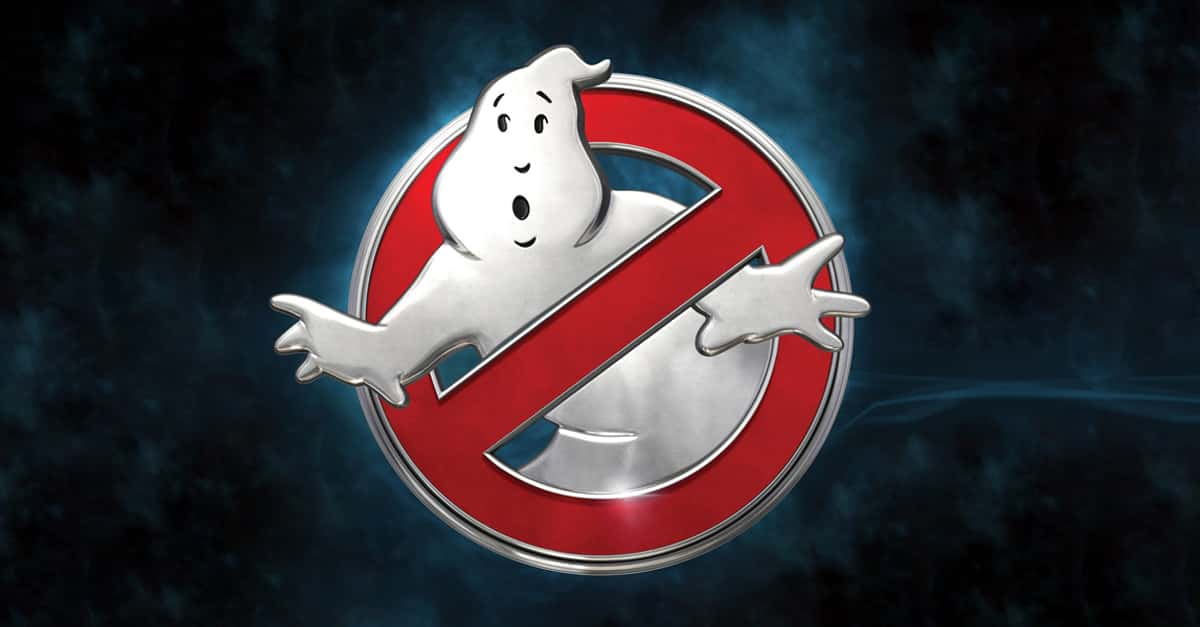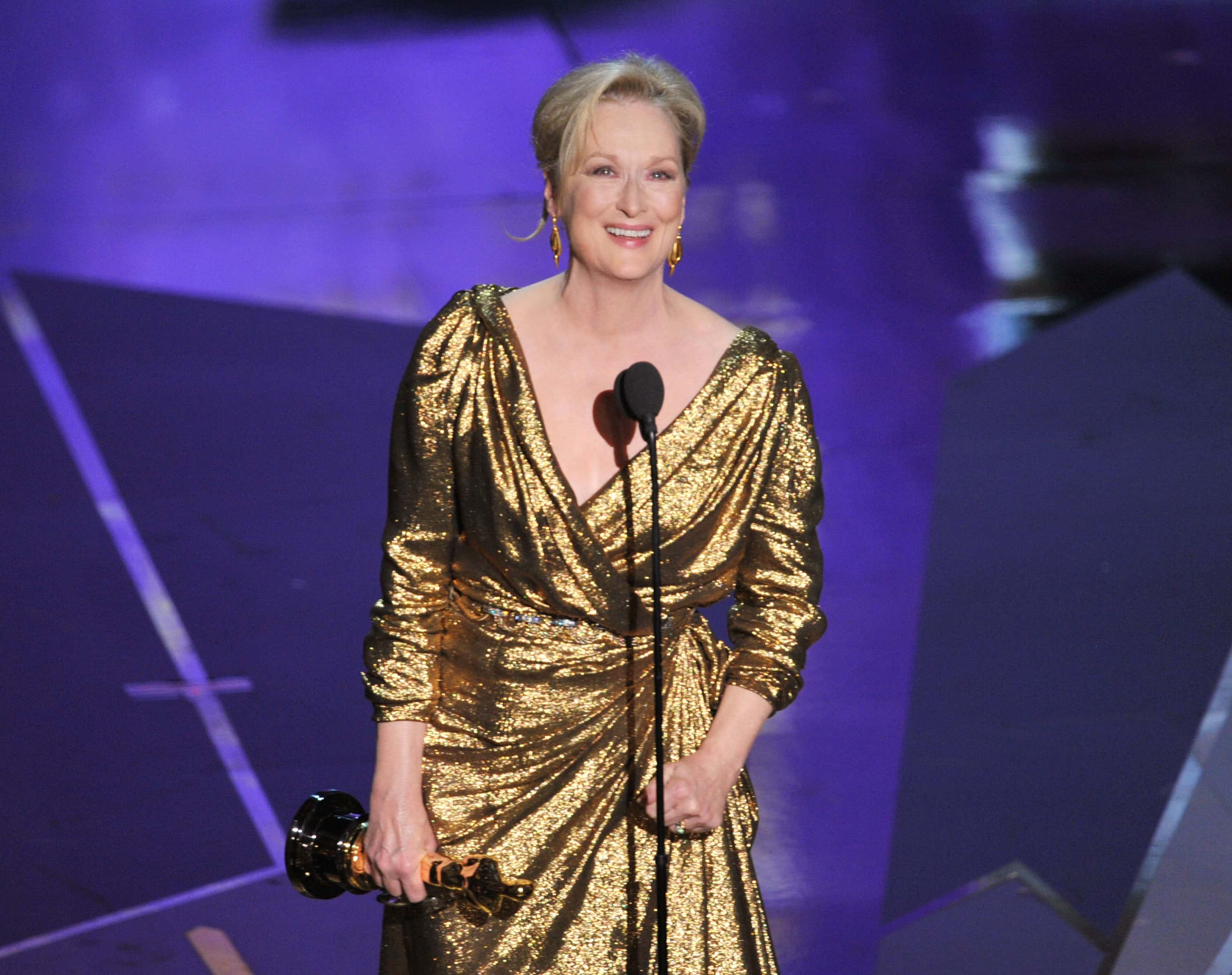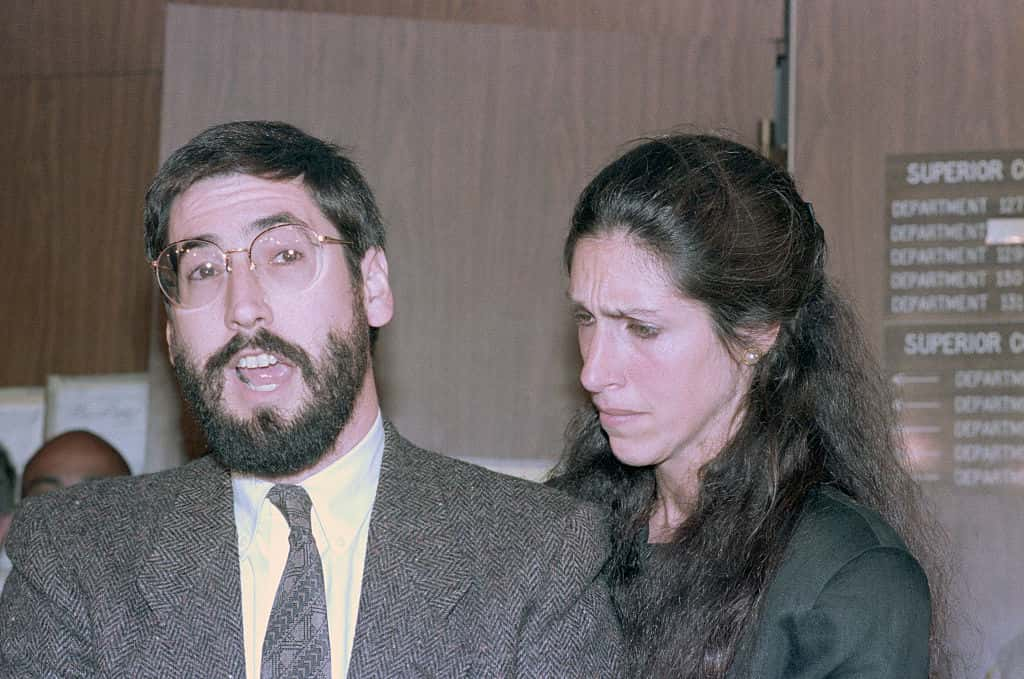If there’s one way to describe the films of the 1980s, it was a time of contrasts. On the one hand, it was a time of renewed patriotism in the US, leading to a renewal of action films which sold action and aggression to millions of eager audience members. On the other hand, the trends of the era led to a backlash from the art community, with films being made to protest corruption, blind patriotism, or battle. While all that was going on, adventure stories and sci-fi produced some of their most well-known and beloved films, which are still hailed as classics to this day. So who was responsible for all these films? What went into making them? How did the times affect the art? Find out more with this list!
45. Forced to Work Together to Make Money
One subgenre which really took off in the 1980s was the buddy cop film. The formula follows two wildly different men forced to work together, with at least one of them being a security officer. The '80s also added the detail that the buddies were often divided by their race, as was done with Eddie Murphy and Nick Nolte in 48 Hrs. Shane Black later wrote the first Lethal Weapon film, featuring Danny Glover and Mel Gibson, and buddy cop movies were here to stay. Among the other successes of the buddy cop genre include Stakeout and Tango & Cash.

44. Box Office Kings
The 80s were a good time to be Harrison Ford, Eddie Murphy, Dan Ackroyd, Bill Murray, and Sylvester Stallone. These men were the top highest grossing male actors in the 1980s.
 Ghostbusters (1984), Columbia Pictures
Ghostbusters (1984), Columbia Pictures
43. That Sounds Great, Who Composed That?
One of the big Oscar pictures of the 1980s was the period musical Amadeus, which followed the life of Wolfgang Mozart as told by his rival, composer Antonio Salieri. In the film, Salieri claims that he was so jealous of Mozart’s brilliance that he conspired to end him. Ironically, the success of the film led to a renewed interest in Salieri’s work—though it should be admitted that the movie portrayed a largely fictional version of their relationship.
42. The Start of a Beautiful Career
In 1987, Spielberg’s WWII film Empire of the Sun was released in cinemas. While it was nominated for six Oscars, it didn’t win any, and it wasn’t very successful financially. However, it did feature an incredible lead performance by a 12-year-old British actor named Christian Bale.  Towpilot, CC BY-SA 3.0 , Wikimedia Commons
Towpilot, CC BY-SA 3.0 , Wikimedia Commons
41. Second Time’s the Charm!
Born on the Fourth of July, the anti-battle film based on the life of Vietnam battle veteran Ron Kovic, originally went into production back in the 1970s with Al Pacino in the lead role and David Petrie directing the script written by Oliver Stone and Kovic himself. However, just like with Platoon, the financing fell through and the film was cancelled. Ten years later, after Stone won an Oscar for directing Platoon, he resurrected Born on the Fourth of July with Tom Cruise in the lead role. He offered the role of Kovic’s father to Pacino, but Pacino refused. Meanwhile, the film wound up winning Stone his second Best Director Oscar.
40. Oh, Those Brats
The 1980s were characterized by a large number of films aimed towards teenagers. Many of these films featured a group of actors known to pop culture as the Brat Pack. These actors included Emilio Estevez, Judd Nelson, Molly Ringwald, Demi Moore, and Rob Lowe. The generally accepted rule of the Brat Pack was that a member of said group had to have been involved with either John Hughes’ The Breakfast Club or Joel Schumacher’s St. Elmo’s Fire. However, actors like Robert Downey Jr. (Weird Science) and Matthew Broderick (Ferris Bueller’s Day Off) are also occasionally included in the group for their own teen-focused films.
39. Too Oedipal
The script for Back to the Future was initially pitched at Disney Studios. However, they rejected it because they took issue with the idea of Marty McFly’s mother falling in love with him when he time-travels back to the 1950s. To be fair, a lot of people still take issue with that part.
 Back to the Future (1985), Universal Pictures
Back to the Future (1985), Universal Pictures
38. Oprah was Unknown Once?
Steven Spielberg’s triumphant The Color Purple turned then-unknown actors Whoopi Goldberg and Oprah Winfrey into Oscar-nominated stars. Winfrey in particular owes a lot to that film, as well as Quincy Jones, who first suggested she be cast in the film after he saw her on a local TV station in Chicago.
 The Color Purple (1985), Warner Bros.
The Color Purple (1985), Warner Bros.
37. Product Placement Wars
Originally, the alien character of E.T. was supposed to be obsessed with M&Ms. However, the company that makes M&M’s, Mars, didn’t give Steven Spielberg permission to use them. Instead, Spielberg went to Hershey’s and got permission to use Reese’s Pieces. Naturally, their appearance in E.T. the Extra-Terrestrial caused a huge boost in Reese’s Pieces sales. Take that, Mars!

History's most fascinating stories and darkest secrets, delivered to your inbox daily.
36. The Terror from Toronto
Although he’d begun making films as early as the late 1960s, Canadian filmmaker David Cronenberg only began to receive serious international notice with the release of the horror/sci-fi films Scanners and Videodrome in the early 1980s. The violent and unsettling nature of those cult classics (especially the infamous scene in Scanners where a man’s head explodes) led Cronenberg to be called “The Baron of Blood” and today he's considered a pioneer in the genre of film known as "body horror".
35. Be Afraid, Be Very Afraid
Cronenberg’s rising star meant that he was asked to cross the border and make American films as well. Cronenberg took that offer and directed Jeff Goldblum in a 1986 remake of The Fly. Making more than $60 million on a $15 million budget, it remains one of Cronenberg’s biggest financial successes.
 The Fly (1986), 20th Century Fox
The Fly (1986), 20th Century Fox
34. We’ll Have What They’re Not Having
When Harry Met Sally was one of the biggest rom-coms of all time, turning Billy Crystal and Meg Ryan into huge stars. However, they only got the chance to be in the film when Albert Brooks and Molly Ringwald turned down the lead roles.
33. Double Record!
Eddie Murphy’s 1984 film Beverly Hills Cop is arguably one his best, while also being one of his most successful. Not only was it the highest-grossing film of its year, it was the highest-grossing R-rated film until The Matrix Reloaded in 2003!  Eddie Murphy Raw (1987), Paramount Pictures
Eddie Murphy Raw (1987), Paramount Pictures
32. Don’t Mind Me, Just Breaking Records Here
In 1981, Katharine Hepburn won an Oscar for the film On Golden Pond, starring Henry Fonda, Hepburn, and Jane Fonda. While the film became famous for reconciling estranged father/daughter Henry and Jane on screen and in real life, Hepburn made Oscar history when she won her fourth Oscar for her performance in the film. The ball’s in your court, Meryl Streep!
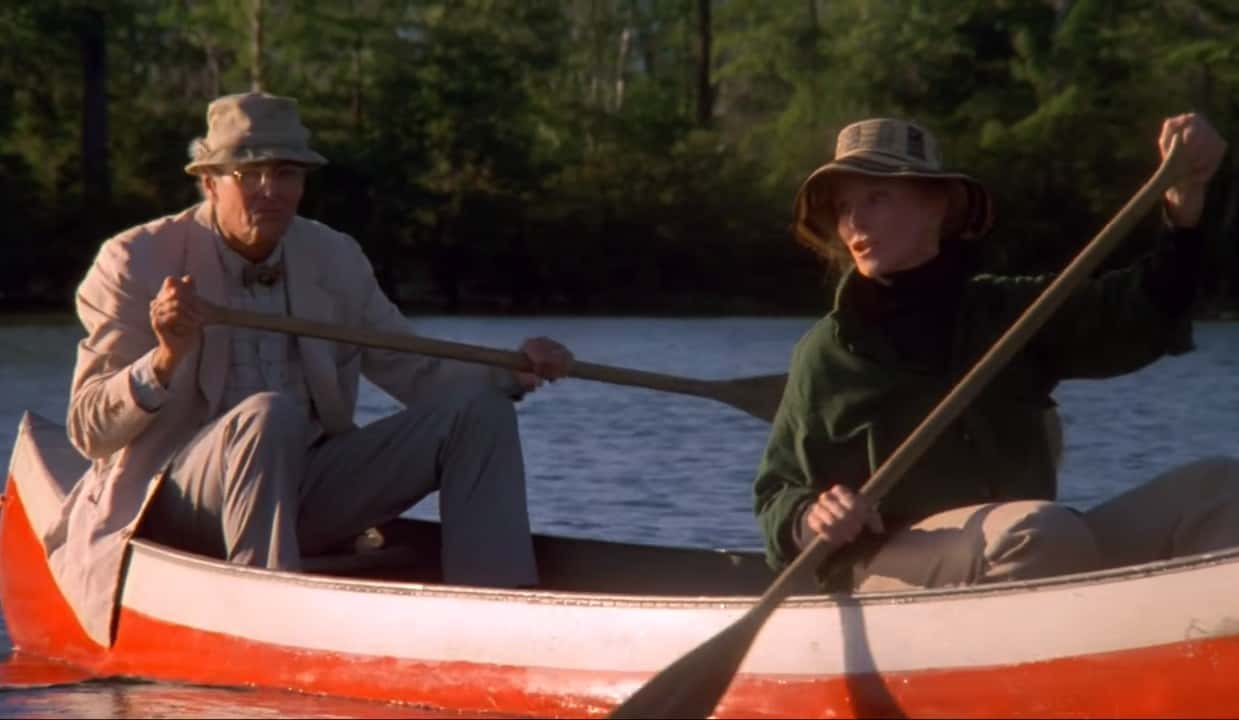 On Golden Pond (1981), Universal Pictures
On Golden Pond (1981), Universal Pictures
31. Golden Woman
Speaking of Meryl Streep, she’s won three Oscars of her own as of 2018. Two of them were for films she did in the 1980s; the first was for the family drama Kramer vs. Kramer, and the second was for the Holocaust-themed drama Sophie’s Choice. Streep would get another five nominations in that decade alone!
30. Man’s Best Friend
The 1980s bore witness to the three Indiana Jones films, starring Harrison Ford. You might wonder just how Steven Spielberg and George Lucas managed to come up with such a cool character with such a unique name. Well, it turns out that the name was partly inspired by George Lucas’ Alaskan malamute. The dog, named Indiana, also inspired the character of Chewbacca in the Star Wars series by sitting up in the front seat next to Lucas whenever he’d go driving. His big furry co-pilot gave him an idea, and the rest was history.
 Raiders of the Lost Ark (1981), Paramount Pictures
Raiders of the Lost Ark (1981), Paramount Pictures
29. Funny AND Influential!
Aside from being a hilarious movie, Trading Places also led to a new rule being made in Wall Street, thanks to the villainous Duke brothers’ actions in the film. The Transparency and Accountability Act of 2010 included a rule “which barred anyone from using secret inside information to corner markets". The rule is often called the “Eddie Murphy Rule” after one of the leads in Trading Places.
 Trading Places (1983), Paramount Pictures
Trading Places (1983), Paramount Pictures
28. Magnum Opus
In the 1960s, director Sergio Leone had revolutionized cinema and made a star out of Clint Eastwood with westerns like The Good the Bad & the Ugly. Then in the 1980s, after nearly a decade long break, Leone made his final film. Once Upon a Time in America was an ambitious period piece starring Robert de Niro and James Woods, lasting nearly four hours in its final cut! Sadly, Leone’s final cut was suppressed after the studio released a 2 ½ hour version which was savaged by critics. Leone passed in 1989, but his final cut eventually became more well-known, and has gone down in history as one of the greatest bandits films ever made. To sum of the disaster that was the original, theatrical cut, one critic called the 2.5 hour version the worst movie of 1984. Then, upon seeing the director's cut years later, that same critic called it one of the best movies of the 1980s.
27. Starting a New Franchise
On the flip side of that coin, First Blood was initially a three-hour long movie that leading man Sylvester Stallone hated. In fact, he hated it so much, that he tried to buy it from the studio, so he could destroy it! Obviously, that was out of the question, so Stallone instead asked the director and producer to try cutting the movie in half by having the character John Rambo be a mysterious figure whose backstory is told by others. This not only changed how action movies were constructed, it led to a slick, taut action film which was the first non-Rocky movie in Stallone’s career that wasn't a complete blast!
 First Blood (1982), Orion Pictures
First Blood (1982), Orion Pictures
26. Missed Opportunity Regained
One reason why Leone may have wanted to go into the bandit genre at all after making his name with Westerns was because he, being an Italian filmmaker, had been offered the chance to direct The Godfather in the 1970s. Leone turned down the job and was said to have deeply regretted his choice. His own take on the genre Once Upon a Time in America, even starred Robert de Niro, who famously played the young Vito Corleone in The Godfather: Part II.
25. Unlucky Thirteen
Aside from directing half the movies in your childhood during the 1980s, Spielberg is also responsible for the creation of the PG-13 rating. His films Gremlins and Indiana Jones & the Temple of Doom were considered too tame for an R rating but too violent for a PG rating, forcing the ratings board to create a new middle ground to accommodate them.
 Indiana Jones and the Temple of Doom (1984), Paramount Pictures
Indiana Jones and the Temple of Doom (1984), Paramount Pictures
24. America’s Cowboy
Throughout the 1980s, Clint Eastwood kept himself busy. But, despite having started in the Western genre, he only made one single Western film throughout the entire decade. That film was the 1985 film Pale Rider, which was also the highest-grossing Western of the 1980s. Eastwood would eventually make another Western seven years later—Unforgiven would end up winning four Academy Awards, with Eastwood taking home both the Best Picture and Best Director Oscars.
23. Playing it Safe
At the end of Star Wars Episode V: The Empire Strikes Back, Han Solo is frozen in carbonite in one of the franchise’s most emotional scenes. However, it only happened because Harrison Ford was hoping to get out of the Star Wars movies and hadn’t signed the contract to be in Return of the Jedi. Freezing him in carbonite gave them the chance to potentially end him off if he didn’t return.  Flickr, Tom Simpson
Flickr, Tom Simpson
22. That’s Not True! That’s Impossible!
Another memorable moment in The Empire Strikes Back is when Darth Vader finally admits to Luke Skywalker that he is the man who owes Luke child support payments (the line goes a bit differently in the film). However, this scene ultimately caused Yoda to make a return in the following film, Return of the Jedi. Lucas spoke with a child psychologist who pointed out that children would not accept Darth Vader’s word on Luke’s parentage, so Lucas brought Yoda back to confirm that Vader really is Luke’s father.
 Wikimedia Commons, Mirko Toller
Wikimedia Commons, Mirko Toller
21. Brotherly Competition
Oliver Stone’s anti-battle film Platoon was his big breakthrough as a director, and was Charlie Sheen’s very first film role, let alone lead role. Interestingly, the film had initially starred his brother, Emilio Estevez, but the project was delayed for two years and Estevez moved on to other projects. No doubt he was kicking himself hard when his kid brother got to brag about being in a Best Picture-winning film!
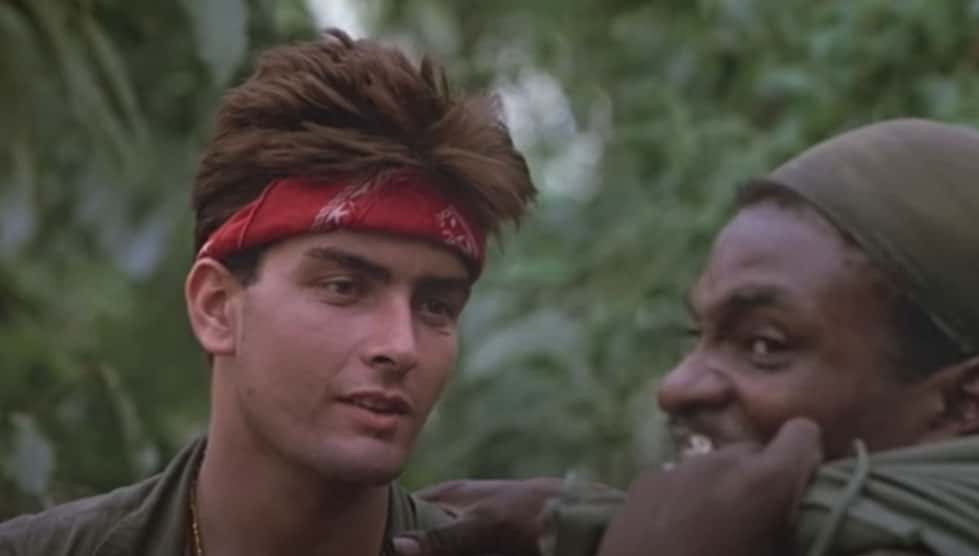 Platoon (1986), Orion Pictures
Platoon (1986), Orion Pictures
20. Put the Glasses On!
If there’s one thing that people remember about John Carpenter’s cult classic They Live, it’s the endless fight scene between the characters played by Roddy Piper and Keith David. Amazingly, that fight scene was originally meant to last 20 seconds! Piper and David ended up choreographing it all and rehearsing it for three weeks. Carpenter was so impressed that they did most of the fight for real (except where shots to the face and groin were concerned) that he kept all five-and-a-half minutes of it in the final film.
 They Live (1988), Universal Pictures
They Live (1988), Universal Pictures
19. Beetlejuice Can’t Play Batman!!
You’d be hard pressed to find someone who didn’t love Michael Keaton in Tim Burton’s Batman films, and the public desire to bring Keaton back was so influential that they eventually made an Oscar-nominated film parodying Keaton’s career with Birdman. However, before anyone ever had the chance to see the first Batman, they were livid at the choice of Keaton as the Caped Crusader. No fewer than 50,000 letters were sent Warner Bros. in protest!
18. Yippie-Ki Yay, Indeed
Aside from being the film which launched Bruce Willis as a movie star, D.i.e Hard was also the feature film debut of British thespian Alan “Snape” Rickman. He was 42 when he got his first film role. Safe to say, it wasn’t his last, either! It does beg the question, however: What was such an awesome actor doing for those first 42 years?
17. Let’s Make the Villain More Machine Than Man! Wait…
Arnold Schwarzenegger’s first big break in cinema was when he starred as the lead role in Conan the Barbarian. The film was directed by John Milius, who also rewrote a script originally written by Oliver Stone. Stone’s original version of the film was famously described by Milius as a “drug fever dream,” which might have been because Stone was addicted to drug at the time. His version of the film would have been four hours long, with the setting being post-apocalyptic, and Conan leading an army against mutants! To be honest, we would have gladly seen that version too!  geeko.lesoir.be
geeko.lesoir.be
16. Movies Solve Everything!
Oliver Stone would eventually kick his drug addiction, and he did it in a rather strange way; he moved to France and wrote the screenplay for Scarface! To be fair, Stone wasn’t the only major filmmaker to use film projects to deal with personal problems (more on that later).
15. We Few, We Happy Few
In 1989, British thespian Kenneth Branagh released his directorial debut, an adaptation of Shakespeare's Henry V, in which he also starred as the titular character. Branagh became one of only seven men in the history of the Academy Awards to be nominated for both the Best Director and Best Actor Oscars for the same movie. Not only that, as of 2018, he is the last actor to have an Oscar nomination for acting in a Shakespearean film.
 Henry V (1989), Curzon Film Distributors
Henry V (1989), Curzon Film Distributors
14. We’re Alright
The '80s opened with a bang when Caddyshack was released in 1980 to critical and commercial acclaim. To be honest, it’s amazing that the film got made at all! The film’s production was hampered by the constant antics and rampant drug use of the cast and crew. Not only that, much of the film’s final cut was made up of improvisations, such as the scene where Bill Murray delivers the “Cinderella story” monologue or when Chevy Chase massages Cindy Morgan.
 Caddyshack (1980), Warner Bros.
Caddyshack (1980), Warner Bros.
13. Belushi! We’re Filming Here!
Another comedy classic which emerged in 1980 was the hilarious musical The Blues Brothers. Based on characters they had played on Saturday Night Live, John Belushi and Dan Ackroyd famously played "Joliet" Jake and Elwood Blues, surrounded by legendary blues and R&B artists such as James Brown, Aretha Franklin, Ray Charles, and comedy actors like John Candy. However, like Caddyshack, the production was the scene of drug-fueled parties that only Hollywood stars could pull off. After several instances of Ackroyd having to find Belushi and drag him back to the set, a bodyguard was hired just so he could prevent Belushi getting high and disappearing for hours on end.
12. The First Spike Lee Joints
The 1980s bore witness to the emergence of Spike Lee. His first feature film, She’s Gotta Have It, was shot on a budget of $175,000, only to make $7 million at the box office! He followed that up with his musical comedy School Daze, which focused on a black college without catering to white audiences. Lee’s most controversial film of the 1980s, however, was Do the Right Thing, which followed residents of a neighborhood in New York City while tackling themes of biased officers brutality, and poverty. It also happens to be one of his best received movies.
 Do the Right Thing (1989), Universal Pictures
Do the Right Thing (1989), Universal Pictures
11. Classic Begets More Classic
An American Werewolf in London has gone down in history as one of the best horror-comedies ever made, but it also ended up creating history of its own in more ways than one. The film’s incredible makeup effects, as done by Rick Baker, caused the Academy Awards to create a whole new category (“Best Make-Up”) just so they could give Baker an Oscar! Not only that, the film inspired Michael Jackson to hire Baker and the film’s director, John Landis, to help him with the music video for his song “Thriller” (you might have heard that song at some point in your life).
 An American Werewolf in London (1981), Universal Pictures
An American Werewolf in London (1981), Universal Pictures
10. The Best and the Worst
Oliver Stone’s classic Wall Street remains to be one of the only films, if not the only film, to ever win both an Oscar (for Michael Douglas’ incredible performance as Gordon Gekko) and a Razzie (for Daryl Hannah’s role as Darien, which everyone saw from the start as being miscast).  Wall Street (1987), Twentieth Century Fox
Wall Street (1987), Twentieth Century Fox
9. It was a Very Good Year…
1987 was a big year for action writer/director Shane Black. Two films were released that year which he’d written. One was the action film Lethal Weapon, which made Mel Gibson a household name and spawned three sequels and a TV spinoff. The other was the cult favorite The Monster Squad, a horror-comedy following kids taking on Count Dracula and his allies. Finally, he also acted in the horror/sci-fi film Predator, starring Arnold Schwarzenegger.
 The Monster Squad (1987), TriStar Pictures
The Monster Squad (1987), TriStar Pictures
8. Not Bad, Eh?
In 1981, the teen romantic comedy Porky’s was released. While it was given harsh reviews, it made over $100 million at the box office. Amazingly, despite the cast and crew mostly being American, the production company behind it was the Canadian-based Astral Media. As a result, Porky’s continues to be the highest-grossing Canadian film ever made!
7. Game On, Man! Game On!
Even before his cult film The Terminator was released in cinemas, the strength of that movie got Canadian filmmaker James Cameron the chance to direct Aliens, the sequel to the horror/sci-fi classic Alien. Due to his inexperience, plus the fact that he was following up a movie done by British auteur Ridley Scott, Cameron faced a lot of opposition and snobbery from the cast and crew. However, he ultimately prevailed; Aliens has gone down as (arguably) the only good sequel that exists in the entire Alien franchise. As for The Terminator, Cameron would eventually return to it in the 1990s and (arguably) make the only good sequel in that franchise as well!

6. Nice Work, Terry!
During the 1980s, Monty Python member and filmmaker Terry Gilliam directed three films which he later dubbed his “Imagination Trilogy". These films all focused on protagonists who escape what they fear most in the real world through adventures in imaginative ones. They also each explored this escapism through different ages; Time Bandits, focused on a child’s journey, Brazil focused on a man in his middle age, while the main character of The Adventures of Baron Munchausen is an old man. Time Bandits was a box office smash and the other two films received multiple Oscar nominations, though they were both box office disappointments. In fact, Munchausen was such a box office flop that it crippled Gilliam’s film career for years afterwards.
5. Lost in Translation
The 1987 film Au Revoir Les Enfants was a passion project for French filmmaker Louis Malle. It was based on his own experiences as an 11-year-old boy in German-occupied France during the WW2. Aside from being a brilliant and emotional film, however, its French title (which caused Americans trouble with pronouncing it) also inspired a young video store clerk to give a unique name to his feature film debut. That clerk was Quentin Tarantino and his film became the 1990 film Reservoir Dogs.
4. This Could be a Story!
In the 1980s, John Hughes was flying from New York City to Chicago, but his plane was diverted to Wichita, Kansas, instead. He spent five days getting to Chicago, but despite the inconvenience, it gave Hughes a bright idea for a film. The film became the 1987 comedy Planes, Trains, & Automobiles, starring Steve Martin and John Candy.
 Planes, Trains, & Automobiles (1987), Paramount Pictures
Planes, Trains, & Automobiles (1987), Paramount Pictures
3. A Good Friend
By the end of the 1970s, Martin Scorsese was on the ropes. His film career was stagnating, and he nearly passed of a drug use in 1978. His friend and collaborator, Robert De Niro, visited Scorsese in the hospital and persuaded him to drop his dislike for sports movies and direct a film about boxer Jake LaMotta. The subsequent film, Raging Bull, was nominated for multiple Oscars, winning one for De Niro, and rejuvenating Scorsese’s film career. He would later credit the film, and De Niro, with saving his life. Given all the films we would have never had if Scorsese had passed before 1980, we’re very grateful to Mr. De Niro!
 Raging Bull (1980), United Artists
Raging Bull (1980), United Artists
2. Making Movies Isn’t Supposed to End People
American filmmaker John Landis spent the late 1970s and early 1980s making some of the most beloved comedy films of the decade (more on those later). However, his career and life were blighted by a horrific accident on the set of The Twilight Zone: The Movie. Due to unsafe working conditions, actor Vic Morrow and two child actors were ended when a helicopter crashed on them in the middle of a Vietnam battle sequence. Landis and four others were charged with manslaughter due to their having created an unsafe environment, and although they were acquitted, Landis’ career and reputation never recovered.
1. What Might Have Been
As funny as Ghostbusters was, the film almost co-starred John Belushi and Eddie Murphy. However, Murphy preferred to make Beverly Hills Cop and Belushi tragically lost his life from a drug use before he could be cast. Bill Murray and Ernie Hudson were cast instead.
Sources: 1, 2, 3, 4, 5, 6, 7, 8, 9, 10, 11, 12, 13, 14, 15, 16, 17, 18, 19, 20, 21, 22, 23, 24, 25, 26, 27, 28, 29, 30, 31, 32, 33, 34, 35, 36, 37, 38, 39, 40, 41, 42

